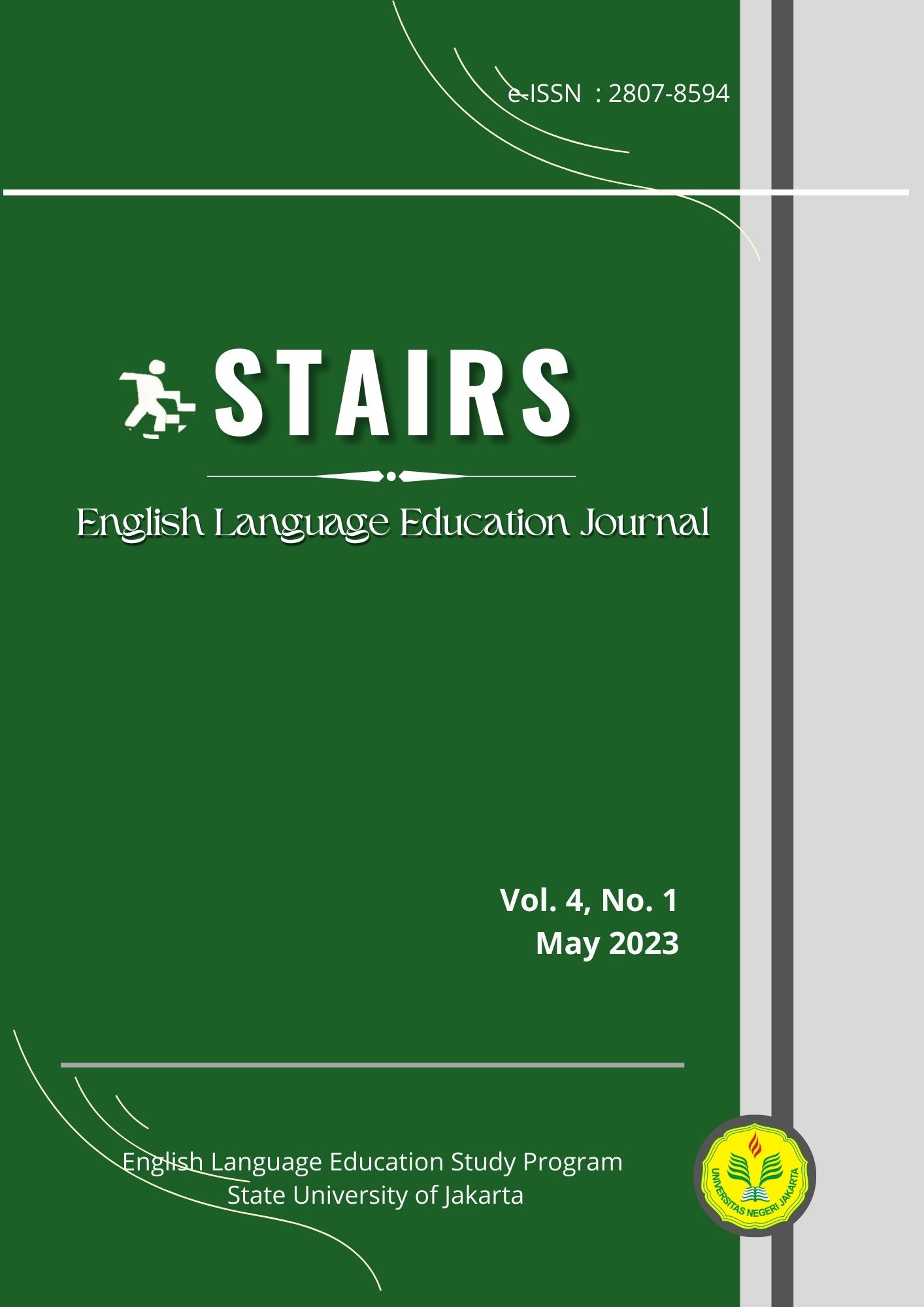The Nature of Collaboration in Collaborative Editing Task: Evidence of First Language Use and Patterns of Interaction
DOI:
https://doi.org/10.21009/stairs.4.1.3Keywords:
Collaboration, Collaborative Editing, First Language Function, Patterns of InteractionAbstract
This study aims to investigate the nature of collaboration in an EFL collaborative editing task, particularly the evidence of first language (L1) use and patterns of interaction that students used and formed when working with a passage editing task. The study recruited 22 students in grade eleven of SMA Xaverius, Pringsewu. The study follows the framework of Storchs’ dyadic interaction pattern (2002) and Storch and Aldosari's L1 function to code and analyze its data. The data of this study were transcripts of 11 pairs of students participating in an EFL editing task. This study found that the number of first-language use is bigger than the target language use. In percentage, the student average produced around 55,7% of words in the first language and 43,3% of words in the second language. The main function of the L1 is for grammar deliberation, followed by the deliberations over vocabulary (20,2% of all L1 turns), task management (11,1% of all L1 turns), mechanics deliberation (5% of all L1 turns), and last is generating ideas (4,5% of all L1 turns). The main interaction pattern used by the learners was the collaborative pattern (eight out of eleven pairs). The remaining pairs fit dominant/dominant, dominant/passive, and Expert/novice for each of the pair, respectively.
References
Kim, Y. & McDonough, K. (2011). Using Pre-task Modeling to Encourage Collaborative Learning Opportunities. Language Teaching Research. 15(2) 183–199.
Lasito., & Storch, N. (2013). Comparing Pair and Small Group Interactions on Oral Tasks. RELC Journal, 44: 361.
Septeria, L. A. (2015). Learners’ Perceptions Toward the Use of L1 And L2 (Indonesian) In English Classroom. Salatiga.
Storch, N. (1999). Are Two Heads Better than One? Pair Work and Grammatical Accuracy. System, 27, 363–74.
Storch, N. (2002). Patterns of Interaction in ESL Pair Work. Language Learning, Vol. 52, No. 1, pp. 119-158.
Storch, N. (2007). Investigating the Merits of Pair Work on a Text Editing Task in ESL Classes. Language Teaching Research, 11, 2; pp. 143–159.
Storch, N., & Wigglesworth, G. (2003). Is There a Role for the Use of the L1 in an L2 Setting? TESOL Quarterly, Vol. 37, No. 4. pp. 760-770.
Storch, N., & Aldosari, Ali. (2010). Learners’ Use of First Language (Arabic) in Pair Work in an EFL Class. Language Teaching Research, 14(4) 355–375.
Vygotsky, L. S. (1986). Thought and language. Cambridge, MA: MIT Press.
Vygotsky, L. S. (1978). Mind in Society: The Development of Higher Psychological Processes. Cambridge: Harvard University Press.
Watanabe, Y., & Swain, M. (2007). Effects of Proficiency Differences and Patterns of Pair Interaction on Second Language Learning: Collaborative Dialogue between Adult ESL Learners. Language Teaching Research. Vol. 11. No. 2, 121–142.
Zulfikar. (2018). Rethinking the Use of L1 in L2 Classroom. Englisia. Vol. 6, No. 1, 43-51.



